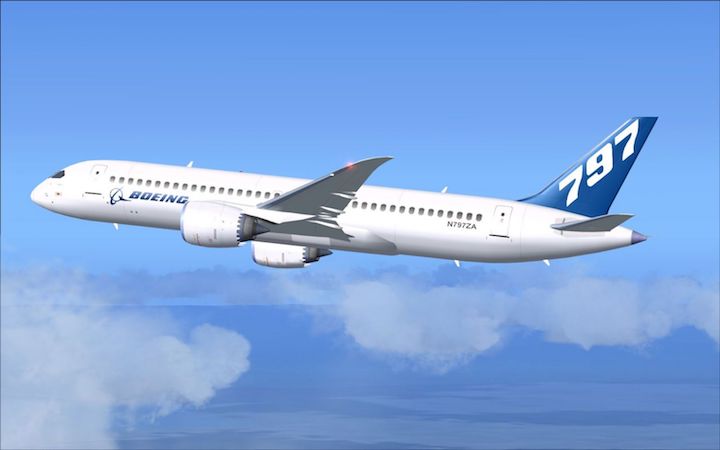United Airlines Holdings Inc. prodded Boeing Co. for details on a proposed new jetliner for middle-distance routes, even as the planemaker races to get its workhorse 737 Max back into the skies.

The world’s second-biggest airline is contemplating how to replace 130 of its older Boeing 757 and 767 aircraft, which are used on a variety of domestic and international routes but are less efficient than newer jets. As Boeing decides whether to build its “new midmarket airplane,” or NMA, Airbus SE is plowing ahead with a longer-range version of its A321neo.
The longer-range A321 increases pressure on Boeing to provide more details on the NMA—dubbed the 797 by analysts—so that customers can assess which model is more suited to their needs. While Boeing continues to study the business case for the NMA with a goal of starting commercial service in 2025, the company’s main priority is returning the Max to service after two deadly crashes and a grounding that has already lasted four months.
NMA Uncertainty
Boeing’s plans for the NMA are in question after the Chicago-based planemaker last week reassigned the executive spearheading the effort, Mark Jenks, to take charge of the 737 program. Mike Sinnett, a senior engineer who had been leading Boeing’s product strategy and future airplane development team, added the NMA to his portfolio as part of the executive shuffle.
“This move seems a clear sign that the NMA program is on ice,” Bank of America Corp. analyst Ron Epstein said in a note to clients this week. “While this doesn’t imply the NMA program won’t happen, it now appears it won’t happen anytime soon.”
In June, Airbus introduced the A321XLR, which can fly 4,700 nautical miles—more than any other narrow-body on the market. The plane is positioned as a more fuel-efficient successor to Boeing’s discontinued 757, able to connect smaller cities that can’t support service by larger jets.
“Boeing is aware, and it’s not just us, that the industry is wanting to know timing on the NMA,” Laderman said, declining to elaborate on when United will make its replacement decision.
For Boeing, a crucial challenge is to keep other major operators of the 757 and 767 from defecting to its European rival. Last month at the Paris Air Show, American Airlines Group Inc., the world’s largest carrier, ordered 50 of the A321XLR jets. American is expected to use the Airbus planes as a replacement for its aging fleet of 34 Boeing 757-200 jets.
United has 76 of the single-aisle Boeing 757 planes and 54 twin-aisle 767 aircraft. Delta Air Lines Inc., with 193 Boeing 757 jets and 767s in its fleet, is also a potential customer for Airbus’s new model, as well as for Boeing’s proposed NMA.








